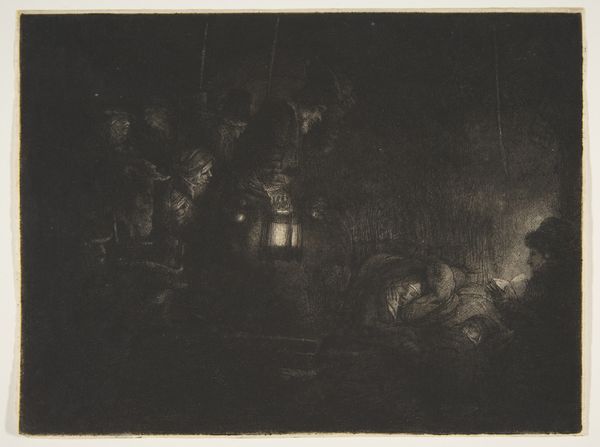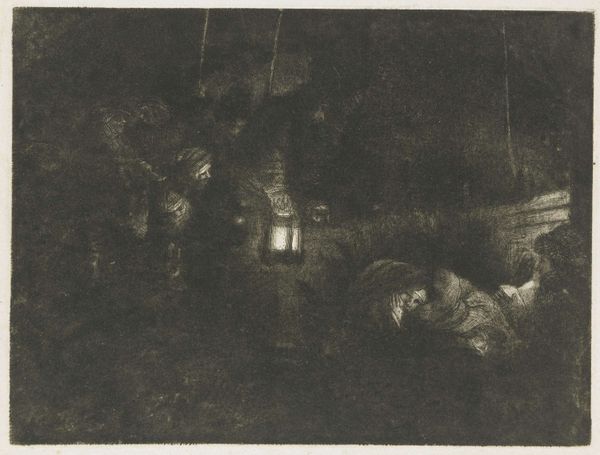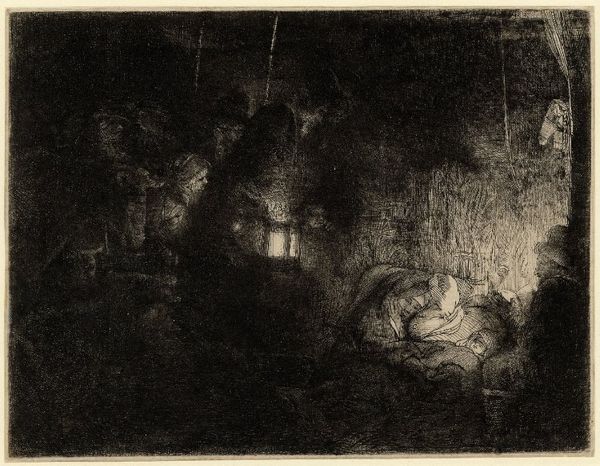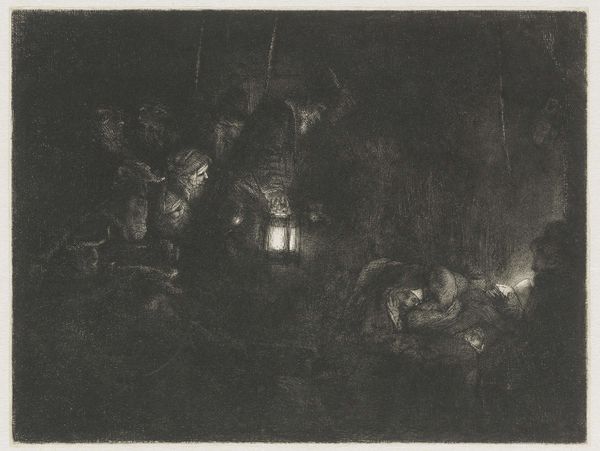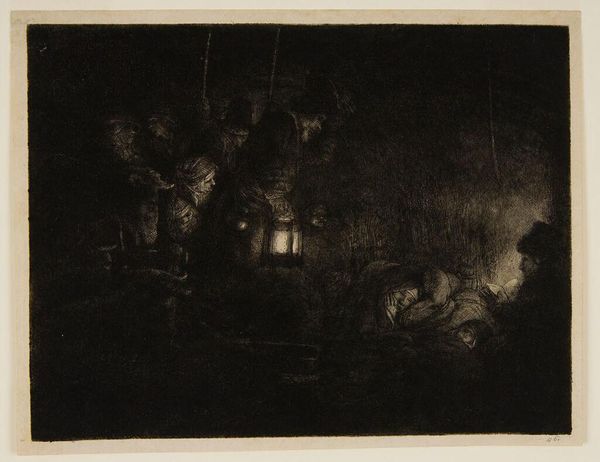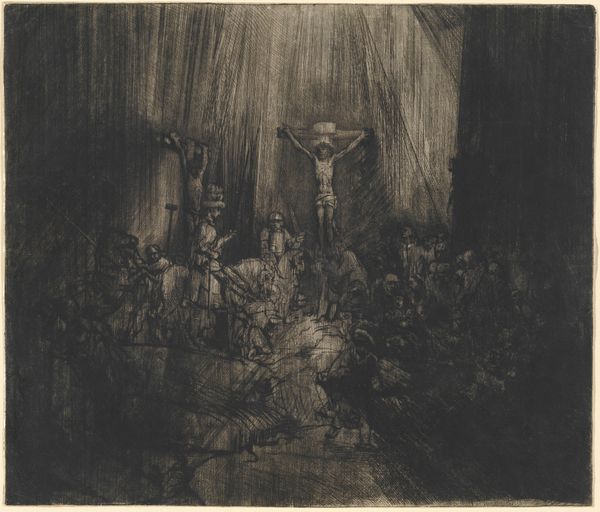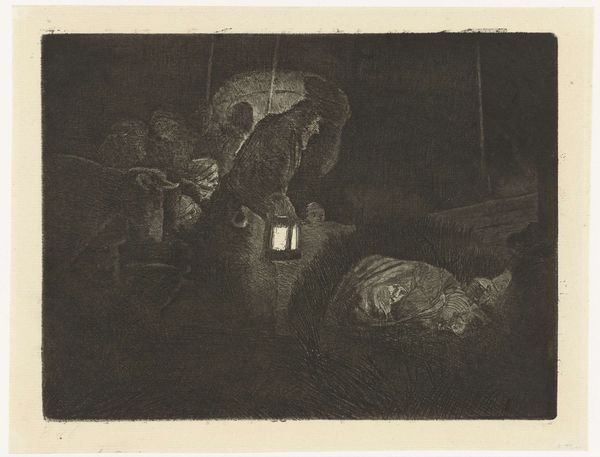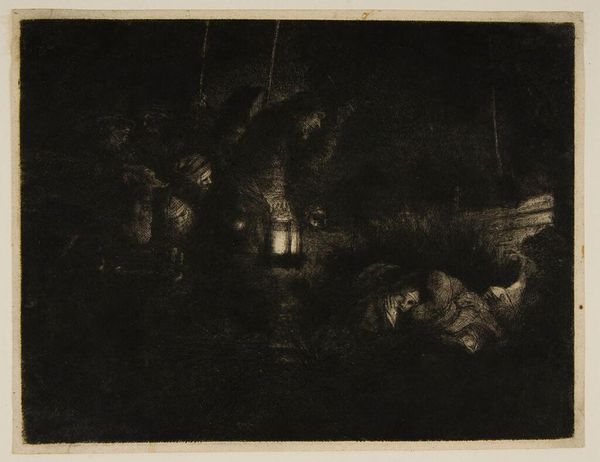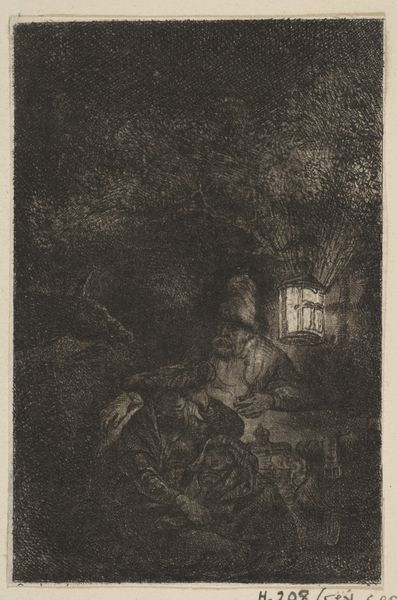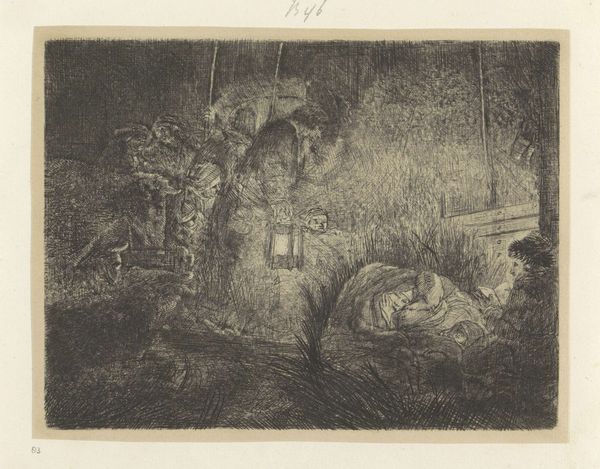
etching
#
baroque
#
etching
#
chiaroscuro
#
history-painting
Dimensions: height 151 mm, width 199 mm
Copyright: Rijks Museum: Open Domain
Editor: This etching, "The Adoration of the Shepherds" by Rembrandt van Rijn from around 1657, is striking. The use of light feels so dramatic, almost like a stage. What do you see in this work? Curator: It's more than dramatic; it's about the socio-economic reality of representation. Consider etching, a reproducible medium. Rembrandt isn’t just depicting a religious scene, he's mass-producing it. What does that tell us about the commodification of faith and the role of the artist as a manufacturer of images for consumption? Editor: I hadn't thought about it that way. I was focused on the story it tells and the beautiful contrast between light and dark. Curator: But how is that "beautiful contrast" achieved? Etching demands physical labor, the biting of acid, the skilled hand manipulating the needle. Look at the density of the lines, the varying pressure. It's not just a scene; it's evidence of a process, a commercial endeavor tied to the print market of 17th century Netherlands. It’s labor transformed into an image, sold and circulated. Editor: So you're saying the medium itself is part of the message? That its accessibility and production tell us something about its context? Curator: Precisely! The choice of etching, the reproducibility, the act of selling these images – all of it is deeply intertwined with the socio-economic forces at play. It connects what might seem like a purely devotional image to a broader understanding of art as a commodity. What did the mass distribution of images accomplish during that era? Editor: That definitely gives me a lot to think about, reframing the artwork in terms of its creation and dissemination adds a new layer of significance. Curator: Exactly, that's what material analysis is all about: Understanding the deeper impact of the artist's decisions on the audience within its period, and in a broader cultural landscape.
Comments
rijksmuseum about 2 years ago
⋮
Joseph sits in the gloom of the stable, reading a book by the light of a lantern (right). He looks up at the approaching shepherds. Mary, curled up next to him, pushes the blanket away to see who has arrived. The shepherds are barely visible, their contours subtly illuminated. Three oxen can be discerned in the left foreground.
Join the conversation
Join millions of artists and users on Artera today and experience the ultimate creative platform.
